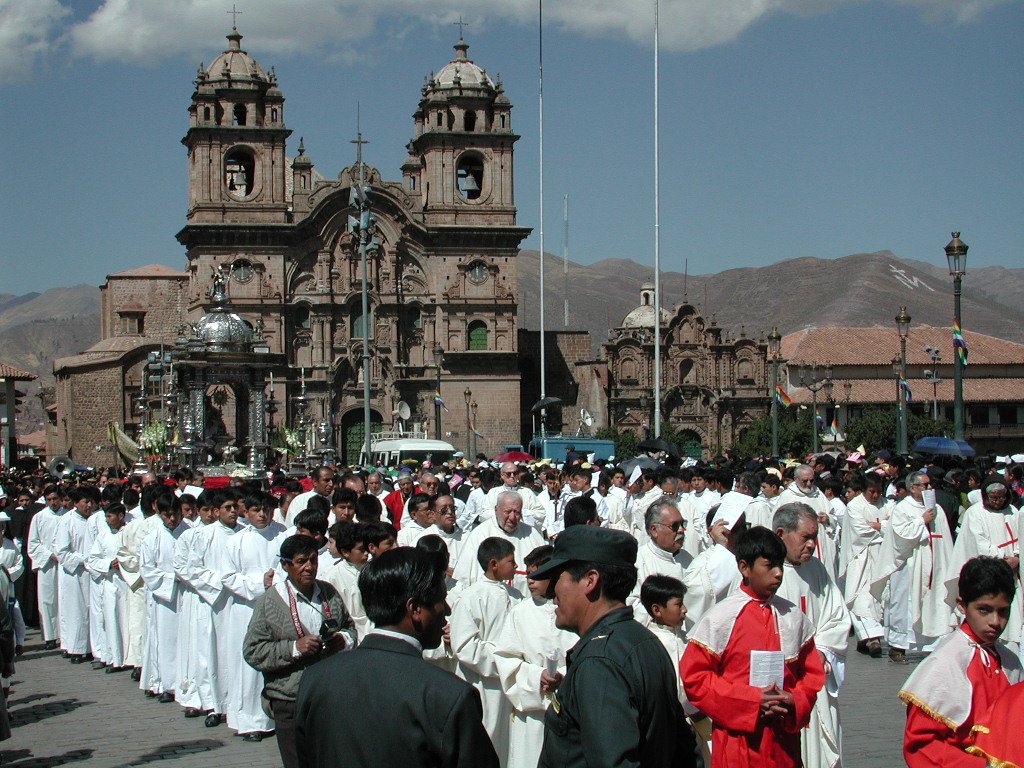 I planed to arrive in Cuzco a day before the Corpus Christi holiday. The city already was a party and there were commemorations at Plaza de Armas. I met some English friends for lunch and in the evening stayed reading in the hotel. I was tired.
I planed to arrive in Cuzco a day before the Corpus Christi holiday. The city already was a party and there were commemorations at Plaza de Armas. I met some English friends for lunch and in the evening stayed reading in the hotel. I was tired.
Next day I woke up early to see the festivities. I sat down on the stairs by the cathedral. There was a great number of Peruvians and almost no foreigner tourists. I was looking at the people passing by: jelly, soda and chocolate sellers. They were also spreading out folders explaining each saint story.
Saints from neighbor churches come the day before to “sleep” in the cathedral from where they leave to the parade. After the commemorations they are returned to their original church. They are 15 catholic saints (San Cristobal, San Sebastian, Santa Barbara, Santa Ana, Virgen de los Remedios, Virgen de la Purificada, Virgen de Belem, Virgen Inmaculada Concepcion, San Jose, Virgen de la Natividade de Almuden, Patron Santiago, San Pedro, San Antonio Abad, San Jeronimo, San Blas).
The commemoration starts with an open air mass. The priest is outside of the cathedral surrounded by saints. By the end of the mass there is the communion and the saints (big dolls) start to leave in parade. Each saint leaves with a band and its worshipers, people from everywhere. They come from the neighboring towns.
The holiday was imposed by the Spanish in order to compete with the Inca party Inti Rayme. As there were a proximity in the calendar, they obliged the indigenous people to commemorate the Corpus Christi. Some time ago, the one who would work and didn’t commemorate the holiday would be fined. The Spanish wanted to make Corpus Christi to be more important the Inti Rayme. Gladly they couldn’t. The indigenous people face this as a preparation party to the great one, the solstice day of Inti Rayme.








[…] Cusco – Corpus Christi […]
[…] sagrado para os maias. O sincretismo religioso é forte, como em outros lugares da América Latina (Cusco, Peru; Salvador, Brasil; Havana, Cuba) a mistura das duas religiões flui de forma complexa para os […]